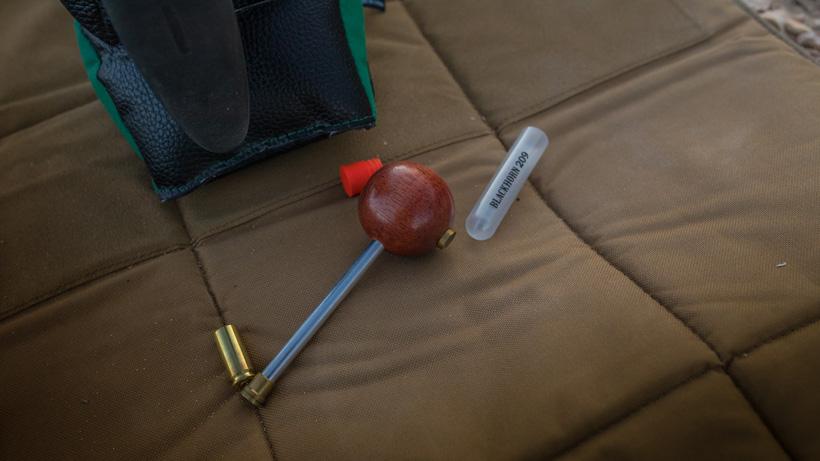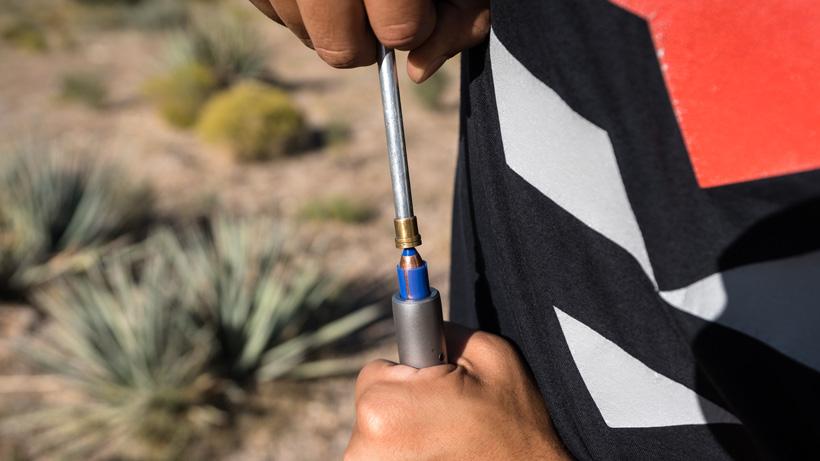





A customer recently reached out who had just drawn his first muzzleloader tag. He was curious about what components to use and where to start. As more and more hunters flock to muzzleloading as a way to gain more opportunities to put a tag in their pocket, this type of question has become increasingly common. The information below was my response to this individual; however, it may be useful to any hunter new to muzzleloader shooting/hunting.
Please understand that more experienced muzzleloader hunters will likely have a more refined process, but that can be overwhelming to someone who is new. Think of this as Muzzleloader Load Development 101 taught by a passionate hunter who still has a lot to learn!
First of all, there’s a lot to unpack when it comes to muzzleloaders. They are often very finicky! And second, muzzleloaders made on the same day in the same factory will shoot the same bullet and powder charge differently. The goal here is to find the combination that your muzzy likes in the most efficient way possible.
At a high level, there are two different types of blackpowder: loose powder and pelletized powder. The load development process differs depending on which type of powder you choose. In my experience, loose powder is more accurate and consistent, but it can be complicated and requires more tools and gear. Pelletized powder seems to be a little less consistent but is much easier to load in the field and significantly simplifies the loading process overall.
The strategy here: changing powder charge volume (or weight), and I keep the bullet choice fixed. I recommend Blackhorn 209, Triple Seven, and Pyrodex in that order.
The cost of materials with this method is less, but it is slightly more complex, and you will need additional tools like a powder measure, charge tubes, and sometimes a different breech plug, depending on your muzzleloader.
The strategy here: changing the bullet type, and I keep the powder fixed. I’ve had great luck with Triple Seven 50-grain pellets.
Bullets are expensive, and the upfront cost of this method is high, but pelletized powder makes loading your muzzleloader very simple and is much easier to reload in the field when you are shaking with adrenaline and cold!
Like many facets of hunting, it's easy to get deep in the weeds trying to squeeze every bit of performance out of your muzzleloader. However, for those of you like me who don’t have the time or money to enjoy such a deep dive, the steps above should get you started in the right direction!
Bullets: Buy two to four boxes of bullets. You can start with one box (instead of two to four), but it may take more than that to find a load your muzzleloader likes, and you’ll want to have plenty of bullets left for practice and, of course, hunting. I've had great luck with Hornady SST muzzleloader sabots (250 grain for deer, 300 grain for elk, but honestly, either will work if availability is an issue). All of the Barnes sabots are also supposed to be great, but I don't personally have any experience with them, and they are quite a bit more expensive. Another option is Powerbelts. They shoot very accurately and are a great option for some states that don’t allow sabots, like Colorado. If you live in a state that requires full-bore projectiles, I would recommend the 290-grain Hornady Bore Driver.
Start at a mid to low charge of loose black powder (the amount can vary based on which powder you are using, so pay close attention to the powder and muzzleloader manufacturer’s instructions!). Take three shots at 100 yards, cleaning the barrel between shots with at least one wet patch (spit patch is fine) and one dry patch.
Buy one box each of three to five different bullet options (Hornady SST 300 grain and 250 grain, 250 grain Barnes, Traditions Smackdown 275 grain and 305 grain, 290 grain Hornady Bore Driver, etc.)
Load 150 grain worth of pellets (3x 50 grain pellets or 5x 30 grain pellets, again, double check with your muzzleloader manufacturer for a safe load) and shoot three shots with the first box of bullets, cleaning the barrel between shots with at least one wet patch (spit patch is fine) and one dry patch. Then, do the same thing with each of the other boxes and see which one(s) your muzzleloader groups best with. If there is a tie, I would go with the heavier bullet since I personally like big slugs or the cheaper of the two if there is a big price difference. Verify the best shooting load with another three shots (again cleaning between shots), and if it is still shooting well, you’ve got your load! If not, move on to the next best from the initial test and go with that.
If you are shooting pelletized powder and shelling out the cash to buy multiple different boxes of bullets makes you cringe, then try reaching out to friends/family with muzzleloaders or joining a muzzleloading forum to see if someone wants to split the cost or sell you a handful of bullets instead of a whole box!
Once you have identified your load, shoot one shot with a clean barrel at a fresh target, then another shot without cleaning at a second target, and see if the point of impact changes. It often does. Repeat this a few times. If you see it consistently shooting 2” higher, for example, then you'll know how to adjust if you have to take a quick follow-up shot in the field.
Burned black powder is extremely corrosive, so be sure to clean and oil your muzzleloader (inside and out) after each range session. If you oil the bore to prevent rust, then be sure to run a dry patch down the bore before the next time you shoot to clean out the oil.
If the accuracy is good (for me, that would mean no bigger than 2” or preferably less than 1.5”) then you've found your load.
If the accuracy is not acceptable, then decrease or increase the powder charge by 5 grains (volume) and shoot another three shots. Repeat this until you are happy with the accuracy.